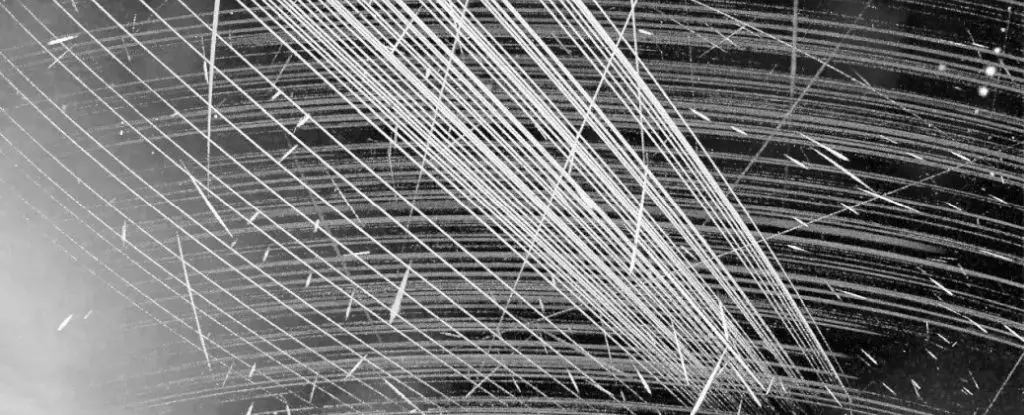As the number of satellites in low Earth orbit continues to surge, the implications for astronomical research and the overall environment have become increasingly dire. Notably, the rise of satellite constellations, particularly SpaceX’s Starlink, has ignited discussions regarding unintended electromagnetic radiation leaking into radio frequency bands critical for astronomical observations. Current advancements in satellite technology, particularly with the introduction of the second generation of Starlink satellites, have resulted in a significant uptick in the emission of radio frequencies, challenging our capacity to monitor and explore the universe.
The revelations surrounding the new generation of Starlink satellites, referred to as v2mini and v2mini Direct-to-Cell, are alarming. Reports indicate that these satellites emit radiation at levels that are up to 32 times higher than their predecessors. This is not merely a numerical increase—it represents a substantial disruption to the 10.7 to 12.7 gigahertz spectrum typically reserved for communication downlink. More worrisome is that a portion of this leakage occurs within the 150.05 to 153 MHz range employed by radio astronomers. According to astronomer Cees Bassa, the unintended emissions from these satellites now surpass even the faintest celestial sources by a staggering margin—10 million times brighter, making it comparable to the brightness of the full Moon against the backdrop of faint stars.
As more companies plunge into the space race, the statistics grow even more concerning. With OneWeb operating 634 satellites and Amazon planning to launch over 3,000, along with China’s ambitions for a staggering 15,000 satellites, the cosmic landscape is rapidly transforming. These developments create not only visible light pollution but also radio frequency interference, complicating the delicate balance astronomers seek to maintain when studying the universe.
The study conducted at the LOw Frequency ARray (LOFAR) in Europe highlights just how dire the situation is becoming. Using an expansive network of approximately 20,000 antennas, researchers noted significant radio emissions from 97 Starlink satellites specifically in the 110 to 188 MHz range. This surge in unintended emissions threatens the observability of critical astrophysical phenomena, adding urgency to calls for regulatory intervention.
The Need for Regulation: Can We Safeguard the Sky?
Despite the pressing need for regulations to manage and mitigate the unintended radiation from satellite constellations, no existing guidelines currently govern this issue. Researchers are emphatic about the necessity for proactive measures that would lessen radio emissions from these satellites. They point out that while the leakage from one satellite may appear minor, the cumulative effect of thousands of satellites could result in an even more pronounced interference problem.
Astronomers and engineers alike are appealing to both regulatory bodies and satellite manufacturers to prioritize this concern. “Humanity is clearly approaching an inflection point where we need to take action to preserve our sky as a window to explore the universe from Earth,” warns Federico Di Vruno from the SKA Observatory. Starlink, as a leading entity in this satellite race, holds a unique position to set a precedent for responsible practices regarding satellite emissions.
Long-Term Consequences for Scientific Progress
The implications for radio astronomy extend beyond mere interference; they threaten the technological advancements that have emerged from space research. Innovations in Wi-Fi, GPS, and medical imaging are all derivatives of principles explored through the study of the cosmos. Thus, the degradation of radio astronomy could inhibit future breakthroughs, hampering humanity’s potential not only to explore space but also to advance terrestrial technology.
Jessica Dempsey, ASTRON’s general and scientific director, emphasizes the urgent need for a collaborative approach between regulators and the satellite industry. Striking a balance is critical to ensure that the burgeoning space industry does not compromise the pristine integrity of the universe we are striving to understand.
The looming crisis posed by the unchecked expansion of satellite networks presents a pivotal challenge for scientists and policymakers alike. In order to preserve the sky for future generations of astronomers, it is essential to act decisively at this juncture, pushing for regulations that will safeguard our ability to study the universe without interference. The combination of technological innovation and regulatory foresight may shape the fate of both our night skies and the sciences dependent on them. The choice is clear: we must advocate for responsible satellite emissions to ensure that humanity’s quest for knowledge continues unabated.



Leave a Reply